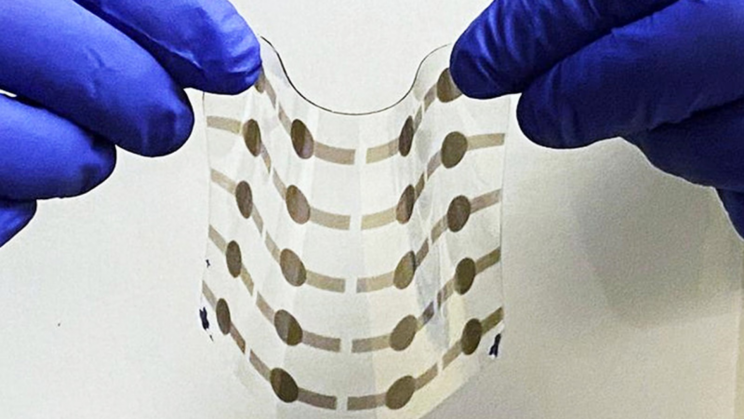In one of the classic Star Trek: The Next Generation episodes, “The Big Goodbye,” Captain Picard dons a fedora as 1940s sleuth Dixon Hill. Picard found a brief escape from life on the Enterprise by way of the Holodeck, a fully immersive virtual-reality room that allowed crew members to live out any fantasy they could dream up during recreation hours.
We know we’re a long way from developing Star Trek’s transporter or warp drive, but what about hyperimmersive holographic rec rooms? High-resolution, 360-degree screens are becoming a reality, though they may feel more Fahrenheit 451 than Star Trek.
Scientists have gotten better and better at creating 3D holographic images, even on small mobile devices, but to have a real holodeck, we need total immersion in the artificial world—and we need to be able to interact with it. And while it doesn’t provide the sense of touch that the Enterprise’s holodeck does, a project called Cave2 has taken the next step in making video entertainment a hands-on experience.
Researchers at the University of Illinois at Chicago recently created Cave2, the highest-resolution immersive panel display in existence. The cave is made up of 72 3D LCD panels arranged in a 320-degree shape. A special pair of glasses with tracking dots on them helps the computer know in which direction you’re looking so it can adjust the images to fit your perspective. You can also use a wand, covered with sensors, to interact with the 3D objects around you. For now, the system is used for high-resolution medical-image viewing. It’s cool but probably won’t be in your living room anytime soon.
What about recreational holodecks? Nathan Burba, director of Project Holodeck (which is exactly what it sounds like), told PM that cost has been a big issue until recently.
“I would say that the technology has obviously been limited,” he says. “The display technology has been locked away in military research, and there’s a lack of innovation there because of the stringent requirements put on researchers.”
Other technologies that needed a boost include body tracking, mobile computing, and inertial measurement units, or IMUs, which detect acceleration and changes in pitch to orient an object, and are usually used to keep unmanned aircraft steady. For a holodeck experience to feel like real life, the simulation has to react seamlessly to your position—if you suddenly look to your left, the perspective of all of the screens needs to change instantly. Think about the lags and misreads you get occasionally with your Wii remote or Kinect. Who would be able to get absorbed in a virtual reality where you occasionally had to repeat hand movements, or where the computer took too long to process a quick head swivel and showed you a pixelated mess?
The key to making a holodeck, Burba says, is to push these technologies into the hands of consumers. He cites the successful Kickstarter campaign of the immersive-virtual-reality headset Oculus Rift as the final push to get his own project going. PopMech tested the Rift at CES this year and found that “[t]he experience is so immersive that it’s actually a bit disorienting.”
Project Holodeck hopes to have a prototype ready in a year and ultimately to produce a mobile computing system that could be worn on the body. A head-mounted display would provide visuals, and controllers on the hands would allow for seamless control of the virtual scenario. Burba envisions everything from hours of immersive adventure-game play to the shared experience of an MMO with players around the world. “You could have any experience that you have now sitting in front of your laptop,” he says, “but standing up and feeling that your entire body is in the world.”
The system might use haptic feedback—like that buzzing you feel in your controller when something explodes in an Xbox game—to simulate a sense of touch. But while that could help with the illusion, it couldn’t replicate the sensation of picking something up and carrying it with you. For that, Star Trek’s holodeck actually manipulated matter into the necessary shape so people could feel and interact with objects on the holodeck. Nifty stuff, but no one is working on it in real life—yet.
[via]






